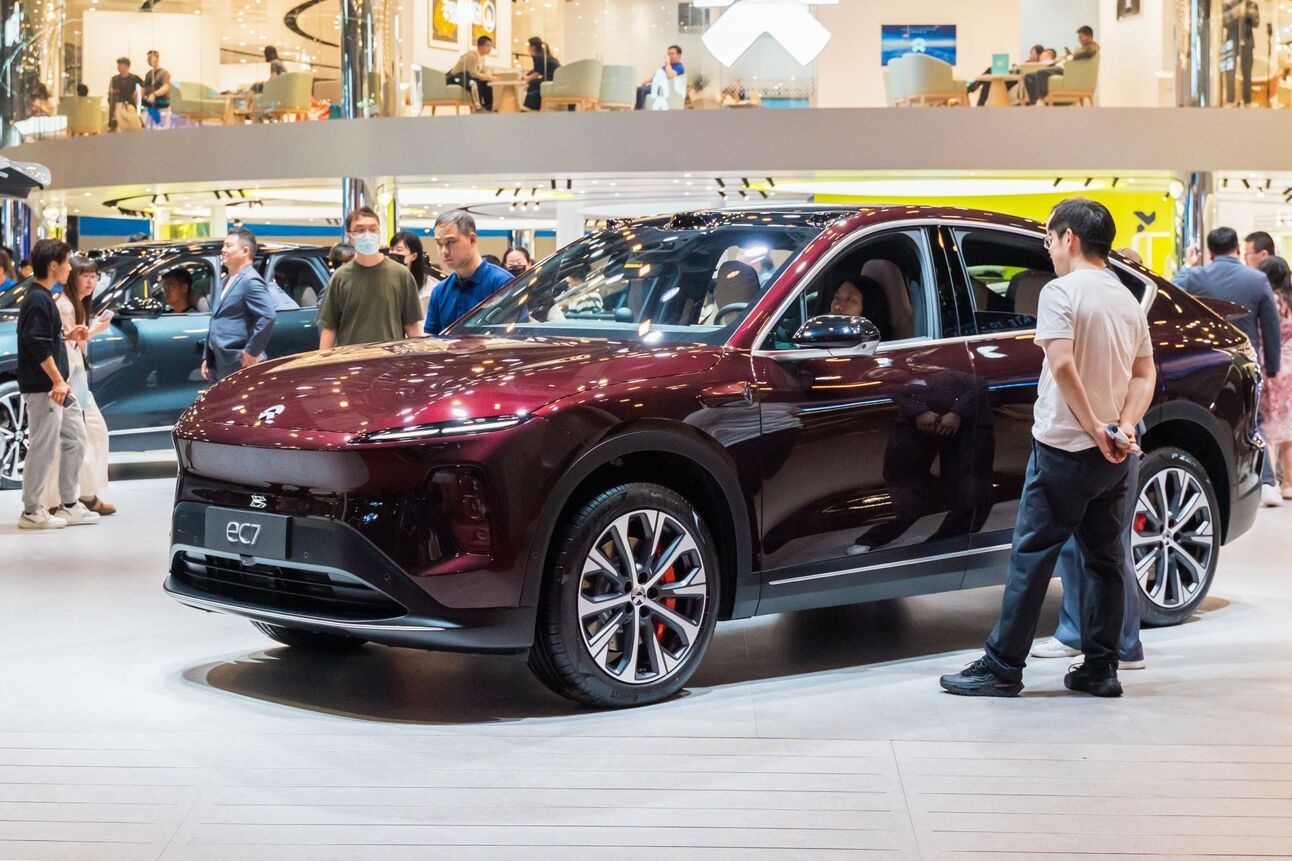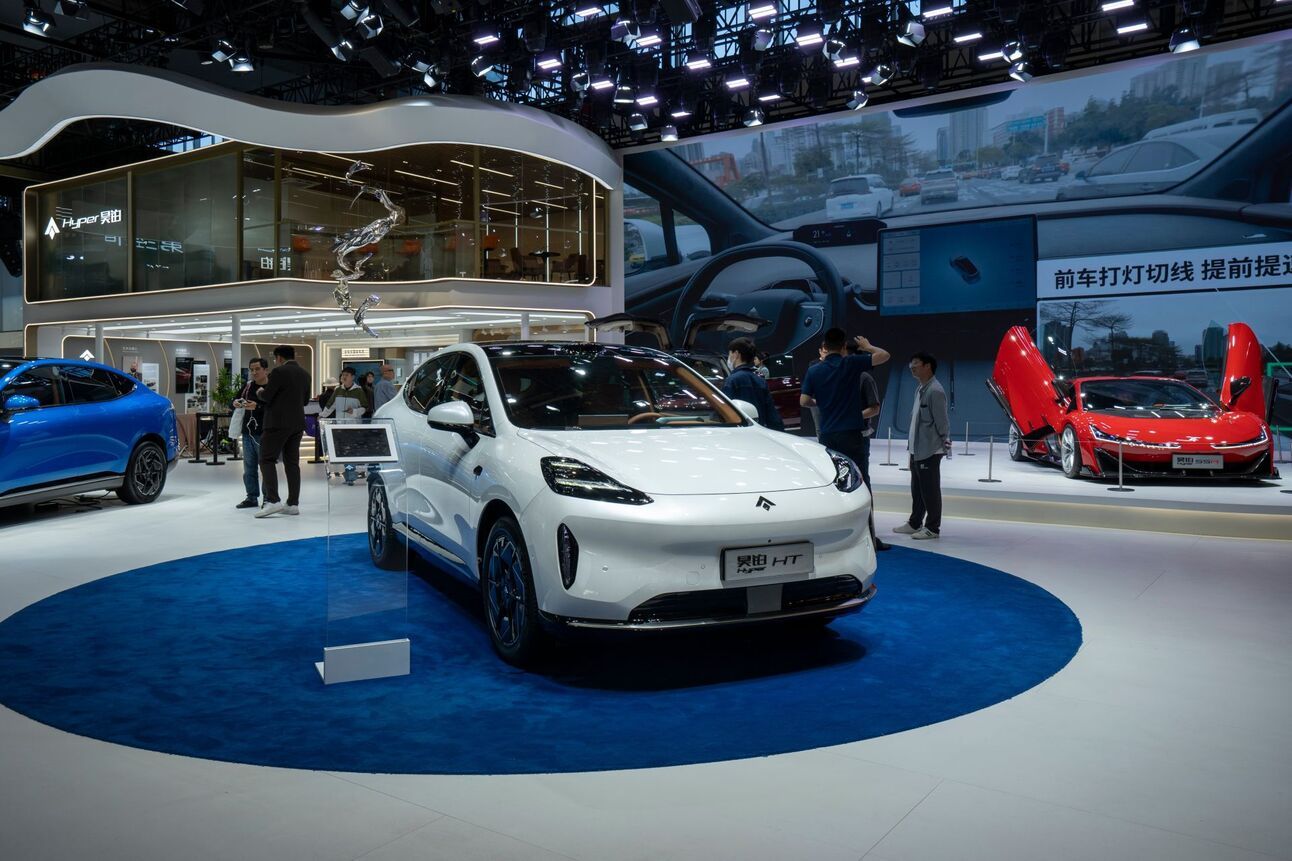
Copyright: DiPres / Shutterstock
New decade, new battleground. Chinese EV makers are setting their sights on Europe – not just with sharp pricing and bold design, but with factories, freight ships, and full-scale strategies.
This week’s edition takes a closer look at the long game. With BYD launching local production in Hungary, Polestar shifting output to Korea, and MG pressing ahead with ultra-low lease deals, the pressure is building. But tariffs, logistics, and regulatory shifts are only half the story.
We explore why Western brands from Volkswagen to Stellantis are bracing for a more crowded playing field, and why timing, trust, and technical nuance may matter more than ever. By 2030, one in eight EVs sold in Western Europe could carry a Chinese badge – but staying in the game will require more than early momentum.
The message? Gaining ground in Europe is hard. Keeping it is harder.
Let’s take a look.
Sebastian
From Fringe to Force: China’s EV Rise in Europe
Chinese electric vehicle manufacturers are accelerating their expansion into Western Europe. According to market analyst Matthias Schmidt, their share of the region’s battery electric vehicle (BEV) market is expected to climb to over 12 percent by the end of the decade. This would equate to approximately 830,000 new BEVs registered annually by 2030 - more than four times the volume reached in 2023.
The current trajectory already points in that direction. Analysts forecast that in 2025 alone, over 250,000 BEVs from Chinese brands will be sold in Western Europe. That would mark a 40 percent increase compared to 2024 and position Chinese OEMs to take advantage of a narrow window before competition intensifies from European incumbents in 2026 and 2027.
A key driver of this growth is BYD’s industrial rollout in Europe. The company plans to begin series production at its first European plant in Hungary by the second half of 2025. The facility’s first output will be the Dolphin Surf, a sub - €20,000 BEV aimed squarely at cost-sensitive buyers. BYD’s pricing strategy is meant to undercut European rivals in the lower segments, especially as subsidies fade and list prices climb.
In parallel, BYD is preparing a second production site in Turkey. The country’s customs union agreement with the EU enables tariff-free exports to Europe, making it a strategically sound location to avoid both the standard 10 percent import duty and the 17 percent anti-subsidy tariff applied to Chinese-made BEVs. BYD’s plan to produce locally while offering highly competitive pricing reflects a broader trend among Chinese automakers.

Copyright: ad-foto / Shutterstock - NIO EC7
Polestar is another brand adjusting its production footprint. To sidestep EU tariffs, the Polestar 4 will be built in South Korea starting in 2025. Its successor, the Polestar 7, is also expected to be produced outside China. Other brands under the Geely umbrella - including Smart, Zeekr, and Lynk&Co - could follow similar paths, using existing capacity in partner plants across Europe.
SAIC, which sells under the MG brand, continues to follow a flexible volume strategy. The upcoming MG S5, based on the Modular Scalable Platform (MSP), will complement the popular MG4 and help streamline production. MG remains firmly positioned in the volume segment, offering competitive leasing deals starting at €199 per month. However, concerns remain around residual values. The MG4, for instance, has seen depreciation of around 50 percent after just 18 months in some markets.
The competitive landscape is expected to shift rapidly beginning in 2026. Volkswagen, BMW, Stellantis, Ford, and Renault are planning major EV offensives backed by next-generation platforms such as BMW’s Neue Klasse and VW’s PPE architecture. These vehicles will offer greater efficiency, more variety, and faster production cycles. Chinese brands could find it harder to maintain price leadership if European brands manage to narrow the cost gap while leveraging their extensive dealer and service networks.
Despite these headwinds, Chinese brands are expected to grow their footprint over the next two to three years. Chery has entered the market with a trio of brands - Omoda, Jaecoo, and Ebro - while Leapmotor is preparing local production in Spain. Backed by Stellantis, Leapmotor will use existing dealer networks to scale quickly in France, Italy, and Germany. XPeng, supported by Volkswagen, is also expanding across Western Europe. Nio is expected to launch a more affordable brand, Firefly, later this year, targeting entry-level buyers with a simplified model range.
By 2027, analysts project that at least half of all Chinese-branded models sold in Western Europe could be built within the region. This would allow Chinese OEMs to maintain pricing power while avoiding logistical challenges and import tariffs. Concurrently, transport costs for Chinese exports are expected to fall, thanks to over 120 new car carriers entering the market between 2025 and 2026. This additional shipping capacity could keep the door open for cost-effective imports, especially for premium and niche models.
A core technical advantage remains in battery chemistry. Most Chinese brands use lithium iron phosphate (LFP) batteries, which cost roughly 30 percent less than traditional nickel manganese cobalt (NMC) packs. While European OEMs are beginning to adopt LFP for entry-level models, they still lag behind China’s ecosystem of suppliers, which offer mature, high-volume LFP production at scale.

Copyright: Tada Images / Shutterstock
Regulatory dynamics may further shape the landscape. The European Union’s 2026 mid-term review of CO₂ fleet targets could lead to changes in emission rules, including a possible exception for e-fuels. If implemented, this could delay BEV adoption among legacy automakers, inadvertently benefiting Chinese OEMs that are already fully electric and better positioned to scale quickly.
The U.S. market remains largely inaccessible to Chinese OEMs, making Europe the most critical export destination in the short to medium term. The region’s relatively open trade environment, combined with its ambitious climate goals, provides Chinese brands with a unique entry point - at least for now.
By 2030, the competitive balance may look very different. Incumbent OEMs will have ramped up production and will likely close some of today’s cost and technology gaps. Still, Chinese brands will have had nearly a decade to establish themselves across European markets, build local capacity, and develop brand recognition.
Whether that momentum can be sustained depends not only on pricing and policy but also on consumer trust, aftersales infrastructure, and the ability to deliver consistent quality. One thing is clear: Chinese EV makers are no longer fringe players. Their presence is becoming a structural factor in the evolution of Europe’s auto industry.
Thanks for reading and being part of this journey. If the content resonated with you, I’d be genuinely grateful if you passed it along to colleagues, friends, or anyone who shares an interest in the future of mobility.

Sebastian, Founder of China EV Pulse

